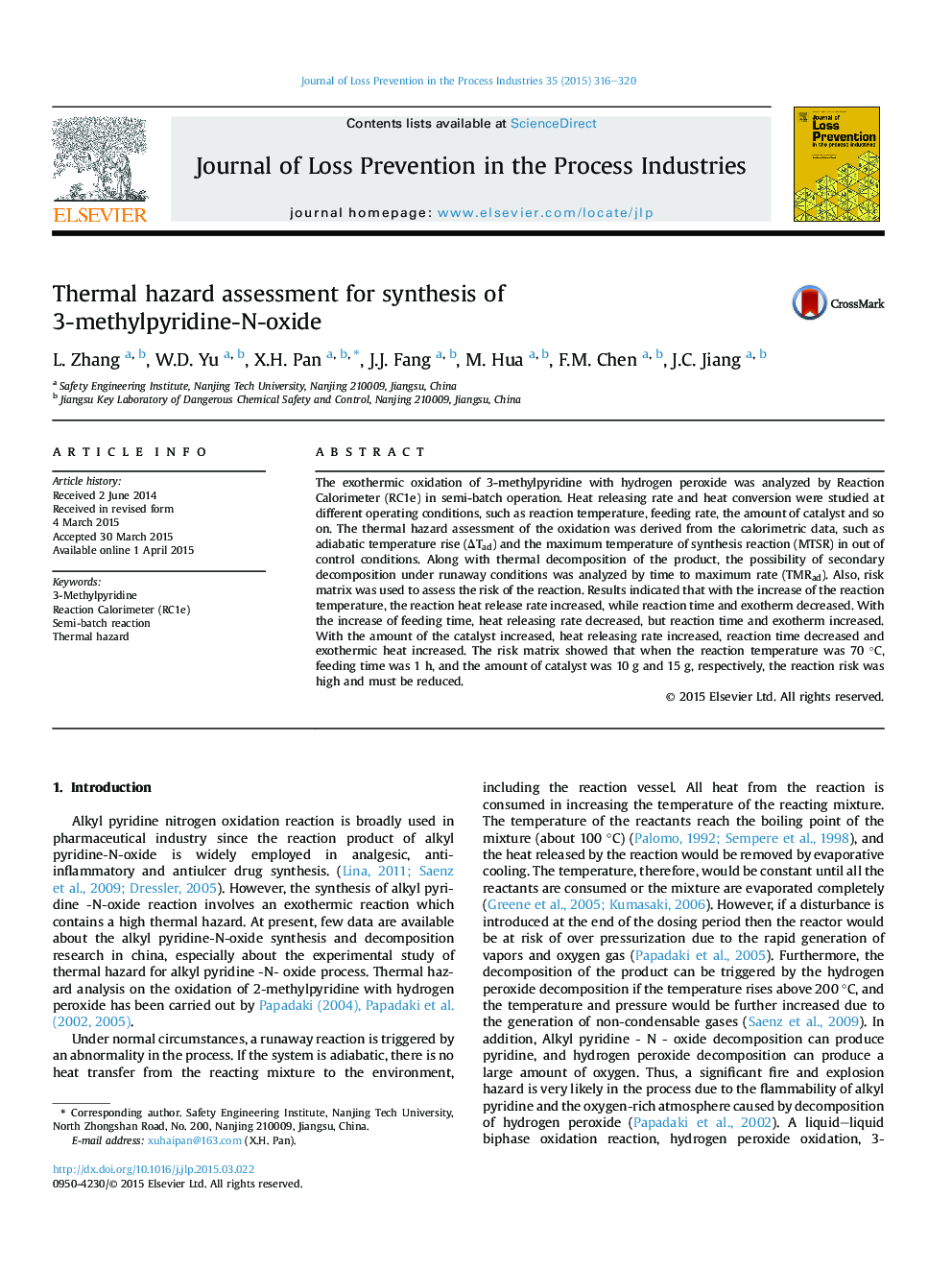| Article ID | Journal | Published Year | Pages | File Type |
|---|---|---|---|---|
| 6973375 | Journal of Loss Prevention in the Process Industries | 2015 | 5 Pages |
Abstract
The exothermic oxidation of 3-methylpyridine with hydrogen peroxide was analyzed by Reaction Calorimeter (RC1e) in semi-batch operation. Heat releasing rate and heat conversion were studied at different operating conditions, such as reaction temperature, feeding rate, the amount of catalyst and so on. The thermal hazard assessment of the oxidation was derived from the calorimetric data, such as adiabatic temperature rise (ÎTad) and the maximum temperature of synthesis reaction (MTSR) in out of control conditions. Along with thermal decomposition of the product, the possibility of secondary decomposition under runaway conditions was analyzed by time to maximum rate (TMRad). Also, risk matrix was used to assess the risk of the reaction. Results indicated that with the increase of the reaction temperature, the reaction heat release rate increased, while reaction time and exotherm decreased. With the increase of feeding time, heat releasing rate decreased, but reaction time and exotherm increased. With the amount of the catalyst increased, heat releasing rate increased, reaction time decreased and exothermic heat increased. The risk matrix showed that when the reaction temperature was 70 °C, feeding time was 1 h, and the amount of catalyst was 10 g and 15 g, respectively, the reaction risk was high and must be reduced.
Keywords
Related Topics
Physical Sciences and Engineering
Chemical Engineering
Chemical Health and Safety
Authors
L. Zhang, W.D. Yu, X.H. Pan, J.J. Fang, M. Hua, F.M. Chen, J.C. Jiang,
